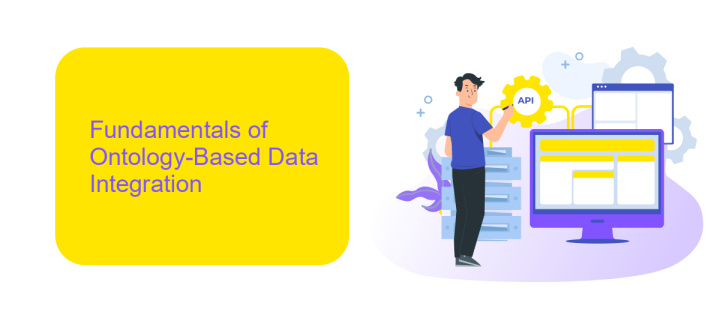Ontology Based Data Integration
Ontology-based data integration is a sophisticated approach that leverages ontologies to unify and manage data from diverse sources. By providing a common framework for understanding and linking disparate data sets, this method enhances interoperability, consistency, and accessibility. This article explores the principles, benefits, and applications of ontology-based data integration, highlighting its pivotal role in modern data management and analytics.
Introduction
In today's data-driven world, the integration of heterogeneous data sources has become a critical challenge for organizations. Traditional data integration techniques often struggle to cope with the complexity and diversity of modern data environments. Ontology-based data integration (OBDI) offers a promising solution by leveraging formal ontologies to provide a unified and semantically rich framework for data integration.
- Facilitates the integration of diverse data sources.
- Enhances data interoperability and consistency.
- Enables more accurate and meaningful data analysis.
By employing ontologies, OBDI allows for the mapping of disparate data sources to a common conceptual model, thereby simplifying the integration process and improving the quality of integrated data. This approach not only addresses the syntactic and structural differences between data sources but also captures the underlying semantics, making it a powerful tool for modern data integration challenges.
Fundamentals of Ontology-Based Data Integration

Ontology-based data integration is a sophisticated approach that leverages ontologies to facilitate the merging of data from diverse sources. Ontologies provide a structured framework, defining a common vocabulary and relationships within a particular domain, ensuring semantic consistency and enhancing the accuracy of data integration. This method addresses the challenges of data heterogeneity, enabling seamless interoperability between disparate systems and ensuring that integrated data is both meaningful and useful.
One of the key advantages of ontology-based data integration is its ability to dynamically adapt to changes in data sources and structures. Tools such as ApiX-Drive can significantly streamline this process by automating the integration tasks and providing a user-friendly interface for managing data flows. ApiX-Drive supports various data sources and applications, making it an ideal solution for organizations looking to implement ontology-based data integration efficiently. By leveraging such tools, businesses can achieve more accurate, timely, and reliable data integration, ultimately driving better decision-making and operational efficiency.
Methods and Techniques

Ontology Based Data Integration (OBDI) leverages formal ontologies to harmonize data from diverse sources, ensuring semantic consistency and interoperability. This approach involves several key methods and techniques that facilitate the integration process effectively.
- Ontology Mapping: This technique involves aligning different ontologies to ensure that equivalent concepts are correctly identified across datasets.
- Semantic Mediation: This method uses ontology-based rules to reconcile data inconsistencies and transform data into a unified format.
- Data Annotation: Annotating data with semantic metadata helps in enhancing the discoverability and integration of data from various sources.
- Reasoning: Applying logical reasoning over ontologies to infer new knowledge and validate data consistency.
- Query Translation: Transforming user queries into ontology-based queries to retrieve integrated data seamlessly.
These methods ensure that data from heterogeneous sources can be integrated in a manner that preserves its meaning and usability. OBDI thus provides a robust framework for achieving high-quality data integration, essential for advanced data analytics and decision-making processes.
Applications and Case Studies

Ontology Based Data Integration (OBDI) has found applications in various domains, significantly enhancing data interoperability and accessibility. One notable application is in the healthcare sector, where OBDI is used to integrate disparate medical records, ensuring that patient data is consistent and easily accessible across different healthcare providers.
Another prominent application is in the field of e-commerce, where OBDI helps in integrating product information from various suppliers, enabling seamless data exchange and improving the accuracy of product listings. Additionally, OBDI is employed in the environmental sciences to combine data from various sources, aiding in comprehensive environmental monitoring and analysis.
- Healthcare: Integrating medical records for better patient care.
- E-commerce: Harmonizing product information across platforms.
- Environmental Sciences: Aggregating data for thorough environmental analysis.
Case studies have demonstrated the effectiveness of OBDI in these fields. For instance, a case study in a large hospital network showed a significant reduction in data retrieval times and improved patient outcomes. Similarly, an e-commerce platform reported increased accuracy in product listings and customer satisfaction. These examples underscore the transformative potential of OBDI in diverse sectors.


Challenges and Future Directions
Ontology-based data integration presents several challenges, including semantic heterogeneity, scalability, and the dynamic nature of data sources. Semantic heterogeneity arises when different data sources use varying terminologies and structures, making it difficult to achieve a unified view. Scalability is another issue, as integrating large volumes of data from diverse sources can be computationally intensive. Additionally, the dynamic nature of data sources means that ontologies must be continuously updated to reflect changes in the underlying data, which can be resource-intensive and complex.
Looking ahead, advancements in machine learning and artificial intelligence offer promising solutions to these challenges. Automated ontology learning and alignment techniques can help mitigate semantic heterogeneity by dynamically mapping different terminologies. Tools like ApiX-Drive can facilitate the integration process by providing seamless connectivity between various data sources and applications, reducing the manual effort required. Future research should also focus on developing more efficient algorithms to handle scalability issues and creating adaptive ontologies that can automatically adjust to changes in data sources, ensuring that the integrated data remains accurate and relevant.
FAQ
What is Ontology Based Data Integration (OBDI)?
How does OBDI differ from traditional data integration methods?
What are the main benefits of using OBDI?
How can I automate and streamline the process of data integration using OBDI?
What challenges might I face when implementing OBDI?
Routine tasks take a lot of time from employees? Do they burn out, do not have enough working day for the main duties and important things? Do you understand that the only way out of this situation in modern realities is automation? Try Apix-Drive for free and make sure that the online connector in 5 minutes of setting up integration will remove a significant part of the routine from your life and free up time for you and your employees.

